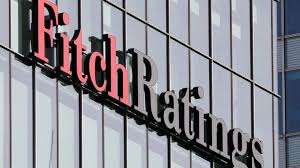Now Reading: Tracking the 15% Price Decline Forecast by Fitch for 2025
-
01
Tracking the 15% Price Decline Forecast by Fitch for 2025
Tracking the 15% Price Decline Forecast by Fitch for 2025

Table of Contents
Dubai’s real estate market, a beacon for U.S. investors with its tax-free returns and 6-8% rental yields, faces a pivotal shift in 2025. Fitch Ratings predicts a 15% price decline starting in the second half of 2025 and continuing into 2026, driven by a supply surge outpacing demand.
After a 60% price surge from 2022 to Q1 2025, with transactions hitting AED 447.2 billion in 2024, this correction marks a transition from a post-pandemic boom. This guide, crafted in clear, SEO-friendly language with an engaging tone, tracks the factors behind Fitch’s forecast, its implications for U.S. expats, and strategies to navigate the decline, supported by data, legal insights, and a critical analysis of risks.
Understanding Fitch’s 15% Price Decline Forecast

Fitch Ratings, a global credit rating agency, forecasts a “moderate correction” in Dubai’s residential real estate market, with prices expected to drop by up to 15% over 18 months starting in H2 2025. This follows a 60% price increase since 2022, driven by immigration, investor demand, and visa reforms. Key drivers of the decline include:
- Supply Surge: Approximately 210,000–250,000 new units are planned for 2025–2026, doubling the supply from 2022–2024. Deliveries peak at 120,000 units in 2026, compared to 30,000 in 2024 and 90,000 in 2025, per Fitch.
- Population Growth Mismatch: Dubai’s population, at 3.948 million in May 2025, grows at 5% annually, while supply expands at 16%, creating a three-to-one imbalance.
- Rental Yield Cooling: Rental growth slowed to 7.4% in Q1 2025, down 30 basis points from H2 2024, signaling demand absorption, per Fitch.
- Market Maturity: After surpassing 2014 price peaks in 2024, the market is nearing its cycle peak, with a natural correction expected, per Redmond Ramsdale, Fitch’s Head of Middle East Bank Ratings.
Despite the decline, Fitch emphasizes no market crash, with prices remaining above pre-pandemic levels and prime areas like Palm Jumeirah showing resilience.
Key Factors Driving the Price Decline
- Oversupply Dynamics:
- A record 150,000 units launched in 2024, with 90,000 and 120,000 units due in 2025 and 2026, respectively, test market absorption.
- Off-plan sales, 60% of 2024 transactions, face pressure as supply outpaces demand.
- Economic and Policy Shifts:
- U.S. interest rates (4.75-5% in June 2025) and global volatility may reduce investor inflows.
- Developer incentives, like 50% payment plans (down from 70%), aim to sustain sales but signal softening demand.
- Rental Market Stabilization:
- Short-term rentals are projected to rise 18% and long-term leases 13% in 2025, but yield compression in high-supply areas like JVC indicates cooling.
- Prime vs. Non-Prime Divergence:
- Prime locations (e.g., Dubai Marina, Downtown) are less affected, with 5-8% price growth forecast, while mid-range areas face steeper declines.
Implications for U.S. Investors

The 15% price decline offers opportunities and challenges for U.S. expats:
- Opportunities:
- Bargain Purchases: Secondary market properties in JVC or Dubai South (from AED 600,000) may drop 10-15%, offering entry points for 10-20% gains by 2028.
- Improved Payment Plans: Developers’ 50% construction payment plans reduce upfront costs, e.g., AED 80,000 down for a AED 800,000 unit.
- Rental Yields: Despite price drops, 6-8% yields persist in prime areas, with short-term rentals in Dubai Marina yielding 8-10%.
- Challenges:
- Value Declines: Current owners may face temporary 15% portfolio losses, though long-term fundamentals remain strong.
- U.S. Tax Burden: IRS reporting under FATCA taxes rental income at 10-37% and capital gains at 0-20%, reducing net returns.
- Oversupply Risks: Non-prime areas like Arjan may see prolonged price stagnation.
6 Strategies to Navigate the Decline
- Target Undervalued Secondary Properties:
- Focus on ready apartments in JVC (from AED 600,000) or Dubai Marina (from AED 1.2 million) for immediate rental income at 6.8% yields.
- Example: A AED 1 million JVC unit could drop to AED 850,000, yielding AED 57,800 annually and appreciating 15% by 2028.
- Invest in Prime Locations:
- Properties in Palm Jumeirah or Downtown Dubai, with 948 luxury sales (AED 15 million+) in 2024, are less exposed to declines.
- Example: A AED 2 million Palm Jumeirah unit yields AED 140,000 annually (7%) with 5-8% growth.
- Leverage Off-Plan Payment Plans:
- Secure off-plan units in Dubai Hills (from AED 1.5 million) with 50% payment plans to lock in prices before recovery.
- Example: A AED 1.5 million unit with AED 150,000 down could gain AED 225,000 by 2027 handover.
- Focus on Short-Term Rentals:
- Capitalize on Dubai’s tourism boom (17.15 million visitors in 2024) with Airbnb listings in Dubai Marina for 8-10% yields.
- Example: A AED 1.8 million Marina Shores unit generates AED 144,000-$180,000 annually at 80% occupancy.
- Diversify with Commercial Properties:
- Office spaces in Business Bay (from AED 800,000) offer 8-10% yields, less affected by residential oversupply.
- Example: A AED 1 million office yields AED 80,000-$100,000 annually, with 10% appreciation by 2027.
- Engage Local Experts:
- Use RERA-licensed agents via Haus & Haus to identify undervalued assets and verify developer credentials.
- Example: Expert guidance could save 5% on a AED 1.5 million purchase, or AED 75,000.
Legal Considerations for U.S. Expats
- Freehold Ownership: U.S. investors can own properties in freehold areas (e.g., Dubai Marina, JVC), with title deeds from DLD.
- Golden Visa: Properties worth AED 2 million qualify for a 10-year visa, achievable in Palm Jumeirah or Dubai Hills.
- Tax Framework:
- Dubai: No property, capital gains, or rental income taxes. Residential sales are VAT-exempt.
- U.S.: Report assets and income under FATCA. Rental income taxed at 10-37%, capital gains at 0-20%. Consult a tax advisor.
- Transaction Fees: 4% DLD fee, 2% agency fee, AED 580-4,200 registration fees.
- Escrow Accounts: Mandatory for off-plan projects, regulated by RERA, ensuring fund safety.
Risks and Mitigation
- Oversupply Pressure: 250,000 units by 2026 could prolong price declines in non-prime areas. Focus on prime locations or emerging areas like Dubai South.
- Construction Delays: Project delays may ease supply pressure, supporting prices. Monitor progress via RERA or Bayut.
- Global Volatility: U.S. interest rate hikes or geopolitical tensions may curb demand. Dubai’s diversified economy (tourism, trade) mitigates impact.
- Speculative Hype: Claims of market crashes are exaggerated; Fitch predicts a controlled correction. Verify with CBRE or Knight Frank.
- U.S. Tax Compliance: IRS penalties for non-reporting are steep. Use professional tax advisors to optimize deductions.
Step-by-Step Guide for U.S. Investors
- Monitor Market Trends: Track price declines using and DLD’s Dubai REST App for real-time data.
- Identify Opportunities: Focus on secondary properties in JVC or prime off-plan projects in Dubai Hills with flexible payment plans.
- Verify Developers: Check RERA credentials for Emaar, DAMAC, or Nakheel
- Cash: Budget for property, fees, and service charges (AED 10-15 per sq. ft.).
- Mortgage: Non-residents need 50% down; residents 20-25%.
- Payment Plans: Use 50% developer plans for off-plan units.
- Complete Purchase: Sign MOU for off-plan or SPA for ready units, pay deposit (10-20%), and register title deed with DLD.
- Post-Purchase: Arrange utilities (DEWA), hire property management, and list rentals on Airbnb for prime areas.
Critical Analysis and Sentiment
Fitch’s forecast aligns with supply-demand dynamics, as 16% supply growth overshadows 5% population growth, per posts on X reflecting market awareness. However, optimistic projections from DAMAC (5-8% growth) and Deloitte suggest resilience, driven by luxury demand and economic diversification. The correction is likely concentrated in mid-range segments, with prime areas like Palm Jumeirah less affected, per Knight Frank. X posts show mixed sentiment, with some investors eyeing bargains while others fear losses, but no crash is anticipated. Critically, Fitch’s 15% cap assumes no major global shocks, which could amplify declines if U.S. rates rise further.
Conclusion
Fitch’s 15% price decline forecast for Dubai’s real estate market in 2025–2026, driven by a 210,000–250,000-unit supply surge, marks a natural correction after a 60% price boom since 2022. U.S. investors can seize opportunities by targeting undervalued secondary properties, prime locations, and flexible off-plan plans, maintaining 6-10% yields and 10-20% gains by 2028. Despite risks like oversupply and U.S. tax burdens, Dubai’s tourism (17.15 million visitors in 2024), visa reforms, and economic resilience underpin long-term potential. watch more
read more: Dubai Real Estate: 6 Positive Impacts of Smart Rental Index Launch





















